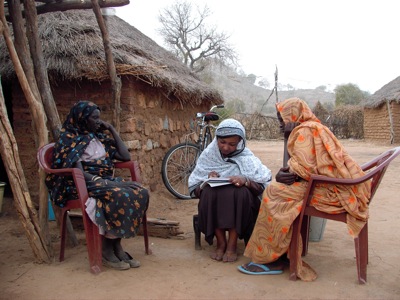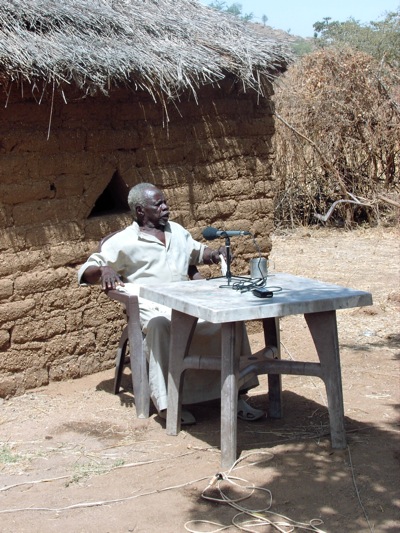One of the central aims of the documentation project for the Tima language was to provide a practical multi-media dictionary. To this end, Tima words and sentences were translated into English, whereas the tranlation into the national language Arabic is not yet completed. Moreover, virtually all entries in the lexicon are linked to sound files in order to display the proper pronunciation of these words and sentences. In addition, photographs from the environment and the material culture illustrate the daily life of the Tima people in the Nuba mountains. A printed version will soon be available to those Tima in the homeland that are not able to have access to the internet. The online-dictionary is still in labour.
Another important aim was to cover a wide range of local genre types, such as narrative as well as procedural discourse, dialogues and songs. The collected data enabled Dr. Abeer Bashir and Dr. Suzan Alamin to analyse the phonetic/phonological system of the language on the one side and its morphological structure on the other side as part of their doctoral dissertation projects. Since most texts were not only audio-taped but also video-taped, the same data provide a basis for an examination of non-verbal aspects of communication among the Tima.
Dr. Abdel Rahim Mugaddam was responsible for the sociolinguistic aspects of the project. He investigated the degree of multilingualism in the Tima community; more specifically, he clarified in which domains Tima is preferred to Arabic or other languages.
Whereas in the first phase the emphasis was put on covering as many aspects as possible of the Tima language (t̪àmáá dùmùrík), the focus during the second phase was divided between the language and the culture of the Tima people. This means, next to elaborating upon our insights into Tima grammar and to working on the multi-media dictionary, the second core theme was the documentation and description of the Tima culture. An ethnographic overview with the description of the general setting, the social system and religion, the administrative structure, the economic system, and the history provides the base for indebt studies of chosen topics. Here the desire of the people to concentrate on the endangered culture, on ‘what is getting lost and what the youth don’t know anymore’, was specially considered. One of the Tima people’s favourite topic is the old traditions concerning their kujuurs (magicians). Although the Tima converted to Islam some 50 years ago, the elders still remember the old times and do not want this knowledge to get lost. But also other fields are concerned: e.g. marriage rituals have changed, and plays are neglected or have vanished already. Daily life in general does not stand still and documentation of these changes were high on the list of priorities.




